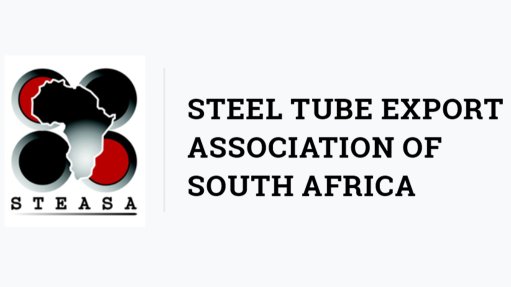Industrial demand for platinum rises to record high

WPIC research director Edward Sterck interviewed by Mining Weekly's Martin Creamer. Video: Darlene Creamer.
JOHANNESBURG (miningweekly.com) – During 2023, platinum has benefited from stellar industrial demand reaching a record level, with 2024 heading for the third-highest industrial demand spot.
Today's publication of the platinum quarterly of World Platinum Investment Council (WPIC) also states that there has, in addition, been a strong 14% recovery in automotive production and, of most significance, ongoing growth in platinum-for-palladium substitution.
The platinum deficit trend continues, with a shortfall of 353 000 oz forecast for 2024, and this year’s deficit going beyond the one-million-ounce mark.
Both mining and recycling supply are expected to be well below pre-Covid levels in 2023 and 2024, and investment demand is forecast to remain positive next year.
WPIC research director Edward Sterck outlined to Mining Weekly aspects around exceptionally strong year-on-year demand growth of 26% as well as far-reaching aspects of the industrial demand growth along with the forces that are at play when it comes to investment in platinum. (Also watch attached Creamer Media video.)
Regarding the sectors that helped industrial demand for platinum to soar sky-high, Sterck had this to say: “Probably the number one sector to highlight would be the glass sector. Platinum is in a platinum/rhodium alloy that is used in glass bushings for the production of fiberglass. It's also used in the casting vessels for fiberglass and for high-quality liquid-crystal display (LCD) screens.
“Now, that's really been one of the big drivers of the increase in demand for 2023. We do see things easing up a bit for 2024, but that’ll still be the third-highest year for industrial demand on record.
“Just specifically for the glass sector, it's worth noting that we're expecting a doubling of installed wind turbine capacity between now and 2030, which is quite a significant increase, and the blades for those wind turbines will largely be made of fiberglass that requires the platinum-containing facilities for the manufacturing of the fibreglass that goes into those.
“Other sectors that are worth noting include the medical sector, which is continuing to grow at a fairly steady pace. Additionally within the industrial categories, we have electrolysers and stationary fuel cells. This is related to green hydrogen, and whilst it's starting off from a small base, it is growing pretty quickly – with proton exchange membrane electrolysers, which contain platinum catalysts for the production of green hydrogen, and then also stationary fuel cells, which contain platinum catalysts for taking the green hydrogen as an energy carrier and using it to generate electricity,” Sterck explained.
Industrial demand for 2023 is predicted to surge by 14% year-on-year (317 000 oz) reaching 2 652 000 oz, the strongest year on record.
Glass demand lifted by more than 50%, or 251 000 oz, and the chemical sector by 10%, or 68 000 oz-plus. While industrial demand is forecast to fall 11% in 2024, it will nevertheless be the third-highest level on record at 2 367 000 oz.
Mining Weekly: Mined supply is expected to remain low in 2023, and will increase by just 3% next year in 2024. What are the factors behind this, and how long is supply likely to remain constrained?
Sterck: In 2023, mine supply has been held back to a degree by planned maintenance, mainly in downstream processing infrastructure in South Africa, as well as, more at the beginning of the year, the impacts of the ongoing challenges that Eskom’s facing, and the shortage of electricity supply. Those problems seem to have eased a bit, and certainly the miners have done a good job of managing the challenges that the electricity shortages have presented. But looking into next year, it's predominantly a result of just further planned infrastructure. Nornickel, the Russian nickel and palladium mining and smelting company, has a large smelter rebuild that was originally planned to be conducted in the fourth quarter of this year. That's been deferred to next year. The impact of that is still pretty difficult to assess fully. But then there's also some further planned maintenance scheduled for some of the producers in South Africa as well. With regards to how long the restrictions on mining supply remain in place, that's pretty difficult to call. A lot of it depends upon what happens with Eskom. Does Eskom manage to solve its problems or does the situation deteriorate. If the Eskom situation deteriorates, then we’ll expect the headwinds facing money supply to continue for longer, and also all the other planned maintenance as scheduled over the medium term. We would expect mine supply to gradually normalise through time, but if Eskom’s challenges remain, then the headwinds would remain in place as well. The final thing on supply, over the medium term, is the impact of the fall in the palladium price and the rhodium price on the basket price and the profitability of the operations. Some of the producers have said that there are some shafts that are looking unprofitable at the moment and therefore there are some risks of either suspensions to operations, or potentially optimisation efforts that may result in lower output in the future.
Platinum recycling supply has also decreased this year, with low levels expected into 2024. Why is this?
That’s an interesting question. If you recall, in November last year, there was a scandal that emerged in the US where an aggregator of spent autocatalysts was raided by the FBI. A number of people were arrested, and they were accused of dealing with over half a billion dollars of stolen catalytic converters. In North America, it seems that trying to prove the provenance of spent autocats is something that's acting as a bit of a challenge for the recyclers there and holding back supply. Recycling volume is down 50% to 60% year-on-year depending upon which recycler one's looking at. In a broader sense, however, the bigger issue seems to be that there's just generally a shortage of end-of-life vehicles. As a result of lifestyle changes post-Covid, people are working from home more, they're driving less, they run their vehicles for longer. Added to that, we’re going through a tricky economic period. There are some economic challenges. The disposable income levels have been compressed. As a result, we're also seeing economic pressures on consumers that are resulting in them deferring new vehicle purchases and running existing vehicles for longer. Interestingly, in contrast to that, we are still seeing increasing output of new vehicles. It seems there is still a bit of a bounce back from the underproduction through Covid and the semiconductor shortage of the last couple of years. But still, the vehicles that would normally have been scrapped, are not being scrapped. Maybe they're being shipped to more developing countries where again, there's been a bit of a shortage of new vehicles. It's hard to say but at the moment, all we can say is that recycling volume is down quite significantly, and it looks like it is going to be depressed for next year as well.
Automotive demand for platinum will jump by 14% this year and continue to increase in 2024, although more modestly. What is driving this increase at a time when challenges within the automotive sector have meant fewer vehicles in production overall?
Part of it is that there is a bit of a bounce back in overall vehicle production from those Covid and semiconductor challenges. But looking into next year, we are expecting fewer internal combustion engine (ICE) vehicles being produced next year than this year. The increase in automotive demand is linked to a couple of different factors. Firstly, there's still increasing platinum for palladium substitution in the exhaust treatment systems in gasoline vehicles, so that's just purely on the price differential, which is closing a bit so that may begin to slow down in the future. Additionally, this year in particular, there are tighter emission standards. That’s very much a China story this year. China has tightened the emission standards for the heavy-duty vehicles and brought in emissions control standards for the off-road vehicle category, which results in quite a big increase in platinum group metal (PGM) loadings. Then finally, there's a change in the drive-train mix. We're seeing more hybrid vehicles being produced than in the past, either a plug-in hybrid or mild hybrid where some of the braking energy is harvested and returned to the motor when accelerating. Those vehicles are running more of the time with the engine turned off than a conventional ICE vehicle. When the engine is turned off frequently, the vehicle operates lower engine temperature and to meet the limits to emissions, higher PGM loadings are needed to ensure that those vehicles remain compliant. That's typically a 10% to 15% increase over a normal ICE vehicle. So, it's a number of different factors that are playing into those increases in automotive demand, and we expect some of those trends, particularly things like increasing hybridisation, to continue for the next few years.
Investment demand will be positive for the second straight year in 2024, but not as high as this year. What forces are at play when it comes to investment in platinum?
Investment in platinum can be divided into two broad categories. There's bar and coin, which is mostly the retail market, and then exchange-traded fund (ETF) and exchange stocks, which is more oriented towards the institutional investor. Bar and coin demand was pretty strong at the beginning of the year, and then went through a little bit of a weak period and picked up again in the last quarter. For next year, we're expecting bar and coin demand to be a little bit lower than for this year. The reasons for that are, firstly, we're seeing a bit of a compression in terms of disposable income, and that's probably going to weigh on bar and coin demand next year, particularly in North America. Also, in terms of the different geographies, it's possible that we'll see some net disinvestment occurring in Japan, just looking at what's forecast to happen in terms of platinum prices in yen terms. It’s an active market in Japan. They are active buyers and sellers of platinum bar and coins, depending upon what the price is. We'll certainly be working really hard to try and help positive investment flows in that geography. In terms of ETF demand, this year was looking fairly constructive with positive ETF demand. Things have softened quite a lot over the course of the last quarter, and looking at next year, it's really a question of what’s expected in terms of interest rates. Precious metal ETFs – gold, silver or platinum for that matter – are non-yielding assets. In a high interest rates environment, they look relatively less attractive to an institutional investor than something that's going to generate an ongoing return. There is, in our mind at least, a relatively decent chance that interest rates will begin to be cut going through next year, and so that will, on balance, make platinum ETFs look relatively more attractive than they might do right now, and particularly with the ongoing and projected deficits in platinum and how that might reflect itself in market dynamics and pricing, certainly there may be a more constructive reason to hold platinum ETFs over the course of next year that is baked into our base case and conservative forecasts.
PLATINUM AND AUTOCATALYSTS
Platinum demand from autocatalysts has equated to between 31% and 46% of total demand in the last five years. Platinum’s diverse non-automotive industrial uses account on average for 30% of total global demand (five-year average). Over the same period, global yearly jewellery demand has averaged 27% of total platinum demand. Investment demand is the most variable category over the past five years, ranging between -10% and 20% of total demand (excluding movements in unpublished vaulted investor holdings).
Global jewellery demand in 2023 is anticipated to decline by 3% from the previous year to 1 852 000 oz, with increases in India and North America failing to counteract weakness elsewhere, especially in China. For 2024, demand is expected to increase by 3% to 1 903 000 oz, with gains in China and India expected to be offset by a weaker North American market.
Platinum’s recycling comes typically from end-of-life auto catalysts and jewellery recycling. Over the last five years, between 73% and 77% of total yearly platinum supply – in refined ounces – has come from primary mining output.
Article Enquiry
Email Article
Save Article
Feedback
To advertise email advertising@creamermedia.co.za or click here
Press Office
Announcements
What's On
Subscribe to improve your user experience...
Option 1 (equivalent of R125 a month):
Receive a weekly copy of Creamer Media's Engineering News & Mining Weekly magazine
(print copy for those in South Africa and e-magazine for those outside of South Africa)
Receive daily email newsletters
Access to full search results
Access archive of magazine back copies
Access to Projects in Progress
Access to ONE Research Report of your choice in PDF format
Option 2 (equivalent of R375 a month):
All benefits from Option 1
PLUS
Access to Creamer Media's Research Channel Africa for ALL Research Reports, in PDF format, on various industrial and mining sectors
including Electricity; Water; Energy Transition; Hydrogen; Roads, Rail and Ports; Coal; Gold; Platinum; Battery Metals; etc.
Already a subscriber?
Forgotten your password?
Receive weekly copy of Creamer Media's Engineering News & Mining Weekly magazine (print copy for those in South Africa and e-magazine for those outside of South Africa)
➕
Recieve daily email newsletters
➕
Access to full search results
➕
Access archive of magazine back copies
➕
Access to Projects in Progress
➕
Access to ONE Research Report of your choice in PDF format
RESEARCH CHANNEL AFRICA
R4500 (equivalent of R375 a month)
SUBSCRIBEAll benefits from Option 1
➕
Access to Creamer Media's Research Channel Africa for ALL Research Reports on various industrial and mining sectors, in PDF format, including on:
Electricity
➕
Water
➕
Energy Transition
➕
Hydrogen
➕
Roads, Rail and Ports
➕
Coal
➕
Gold
➕
Platinum
➕
Battery Metals
➕
etc.
Receive all benefits from Option 1 or Option 2 delivered to numerous people at your company
➕
Multiple User names and Passwords for simultaneous log-ins
➕
Intranet integration access to all in your organisation

















